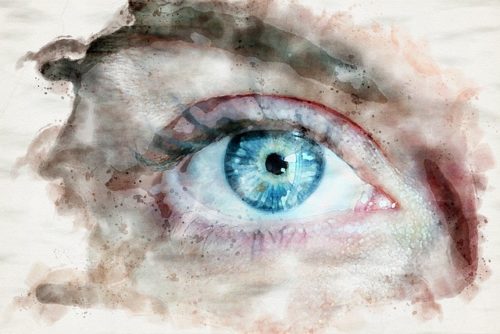by Carolyn Edlund
Review and revise your portfolio to give a professional and versatile presentation.

Artist credit: Robert Ruggiero
I often hear from artists who want an impartial review of their portfolio. They have questions like, “Is it the right size?” “Does my portfolio make sense?” and “How can I improve it?”
As a visual artist, your work is meant to be seen. In order to be taken seriously, it’s essential to use excellent photos of your art. Using that as your standard, organize your portfolio presentation as one grouping, or combine a larger portfolio into smaller, related collections. Then, create accompanying materials (such as your artist statement) to share your concept or inspiration and enhance the viewer’s experience of your art.
Many artists have already organized a portfolio, and this is often shown on their website. Whether your portfolio is in this form or simply exists as photos in a camera or computer file, you can improve it through careful self-curation. Taking this step will help to eliminate your weakest pieces and anything else that detracts. Your goal should be to construct a strong presentation that shows your body of work to it’s greatest effect, making maximum impact.
What should you remove from your portfolio? Here are some candidates:
- Older work that no longer reflects your direction. Perhaps your portfolio contains art that you no longer make, or may have been from student days. If it doesn’t add a dynamic element to your current work, it may look discordant and dated. Update your portfolio by taking these out, or relegating them to “archived” status.
- Art in other mediums can become orphans that just don’t make a lot of sense with the rest of your work. If your portfolio is filled with oil paintings and you have one or two charcoal sketches shown, it may appear imbalanced and detract from the impact of your work. Remove them and let them fade into history.
- Art that doesn’t reflect your best efforts. View and consider your entire body of work. Which pieces are the least successful? Did you include them in your portfolio to make it appear larger or more complete? Let these go. A smaller collection of your best artwork is better than a larger one that includes mediocre work.
- Outliers that don’t make sense with the rest. Experiments or artwork that doesn’t fit with the theme of your portfolio will stick out like a sore thumb. These are easy to spot, and should be culled from the group.
Keep your portfolio to a reasonable size
What is the right size for an art portfolio? The answer will vary, depending on your medium. For example, many photographers have taken thousands of photos. But presenting an enormous selection of photographs is likely to lead to overwhelm. Instead, remove any photos that are too similar, and sort what you have into collections. Then, limit what you share at any given time.
On the other hand, if your studio work is time-consuming and you make only a limited amount of work, you might be concerned that your portfolio is too small. Stick with showing your best work; your portfolio will grow over time. Meanwhile, you can use additional photos of existing work (like in situ or detail shots) to enlarge the number of images of your work for the viewer to enjoy.
Focus on cohesiveness
Sometimes, artists put together a selection of images meant to demonstrate the breadth of their work, but instead end up with a jumbled group of work that isn’t pulled together. My advice is to go deep, not wide. I love to see a tightly cohesive collection that shows me the artist has thoroughly explored a particular direction and produced a mature and compelling collection of work.
Another problem is putting together a portfolio that includes vastly different mediums—such as pottery, watercolor and photography. This tends to give the impression that the artist is an amateur, cannot make up their mind, or lacks focus. If you enjoy working in different mediums or different styles, do so. But then make a decision about the art that you want to share in a portfolio that makes sense. Occasionally a theme or style can cross over different mediums, with the portfolio remaining cohesive. Otherwise, an artist might present completely separate portfolios in different mediums.
Curating for a select audience
At times, you may want to construct a very specific collection of your art customized for an individual or group, or for a certain purpose, such as:
- An offering prepared for an existing collector, carefully selected to work with the works they have already acquired
- A grouping of artwork that you propose to include in a solo show at a gallery or museum
- An application to an art school, residency, or competition chosen to represent the work you want them to consider
- Inclusion in a catalog or media kit that displays a particular body of work for a specific audience
Sometimes your curated works will be shown in person, such as during a personal visit with a collector or in a meeting with a gallery owner. Otherwise, they may exist as a group of digital images in a PDF or appear on a web page. Portfolio collections of this type can easily be put together using an online tool like Artwork Archive. Alternatively, you can create a private page on your own art website that offers a custom selection, and share that link with the intended viewer.



Speak Your Mind